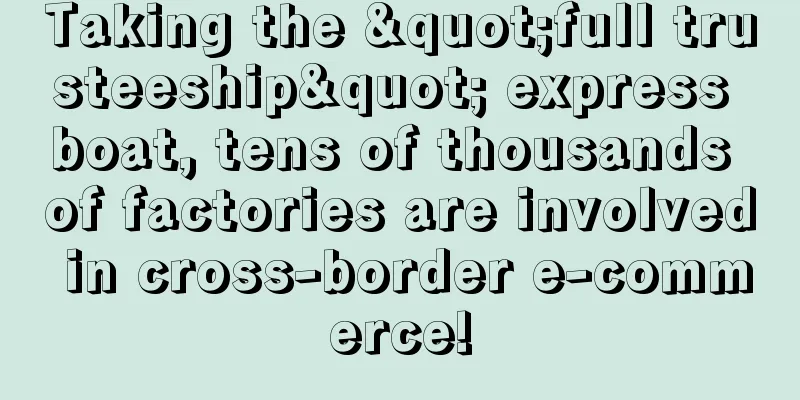|
Amazon’s in-site advertising has low costs and a very high conversion rate, and is definitely a must-have tool for increasing order volume. However, if you want to do it well, you need to use a variety of methods. Amazon in-site advertising is something that every seller must practice. It provides products to customers who are more willing to buy. The advertising cost is low and the conversion rate is quite high. It is definitely a necessary tool to increase order volume. However, if you want to do it well, you need to use many means. I believe that many sellers are already familiar with the settings of CPC ads. After the settings are completed, there will always be various questions when viewing the data reports, which may lead to some misconceptions. So let us re-understand the things about pay-per-click ads. Common Misconception 1: The highest bidder wins Many sellers think that the higher the bid, the higher the ranking of the ad display. If that were the case, Amazon would simply auction the ad space and the highest bidder would win. Advertising booths actually have a ranking system just like search. Search positions are determined based on sales and conversion rates, while advertising positions are determined based on performance and bids, and then rotated over a certain period of time. After all, Amazon will not display your ads in the front just because you bid high and ignore the low quality of your product. After all, they don’t lack your advertising money, but want to give all buyers the opportunity to have priority. Of course, it doesn’t mean that you can rank higher without spending money or spending less money. Within a certain range, the higher the bid, the greater the chance of ranking higher. In short, bidding is a secondary factor. Amazon will still give priority to displaying products that are most beneficial to customers. Amazon's backend will help you predict the bidding and cost per click based on your keywords. If your bid is $0.2-0.5 higher than the price given by the system, you will already have a great advantage. However, if you choose to bid more than $1 higher, the difference from $0.5 is actually not that big. If the price is already set very high but there is still no display position, it may be that the keyword search volume is too low, or the ad has been running for a short time. It is recommended to find some words with higher search volume for delivery, or you can set up another ad group for automatic delivery, which may have a different effect. Myth 2: The ad has good exposure and click-through rates, but no orders. The keywords are all hot searches, the pricing is higher than the bidding, the display position is good, and the exposure is very high. However, the click-through rate cannot be increased, and the number of orders has not increased at all. You should know that pay-per-click advertising is only an auxiliary means. After attracting the customer's attention, it ultimately depends on the product itself to make the customer consume. If the product itself is not good, even if it attracts traffic, it will not be able to convert, and you may end up getting one or two bad reviews. In the advertising report, no matter what data is there, it ultimately exists for conversion rate. Only by constantly selecting keywords with better data and optimizing listings can you get more conversion rates and your advertising performance will get higher and higher. Only then will Amazon believe that you can bring benefits to the platform and be willing to give you a better position. Myth 3: Advertising is enough After setting up automatic matching of paid ads, I just ignore everything, don’t look at the reports or make adjustments, and occasionally glance at the data. Even if sales increase, I don’t know whether it is due to advertising. In this case, it doesn’t make much sense to spend the money. You still need to frequently download paid advertising reports, analyze data, make continuous adjustments, optimize keywords, and optimize products in order to gain more profits. Let’s change our thinking. When sellers place ads on Amazon, they often encounter three situations: 1. A lot of exposure, but low click-through rate A high exposure rate means that the keywords set in the ad are indeed hot search terms. However, if users see them but do not click in, you need to consider whether there are problems with the four contents presented in the CPC ad position: Title: brand, selling point, main parameters, functions, natural attributes of the product, core words of the product, color, whether these factors are included and whether they can attract customers to click in. Image: Whether the main image of the product, that is, the large image in the ad space, can attract customers to click on it, and look at your CPC header image from their perspective to see if they are willing to click in. If not, then you should consider how to make the header image more creative, and showcase your product from various aspects such as angle, visual effect, and consumer demand. Price: CPC advertising space displays more than just your products. Compared with the prices of ads on the homepage, do you have an advantage? Review: If the product only has three stars, will customers still click in? Four stars is the minimum requirement. If it cannot be achieved, there is no need to talk about competitiveness. 2. High click-through rate, low conversion rate At this point, congratulations, many customers click in to view the details page of your product, and there is also more product content for customers to see. If they do not place an order, they need to consider some things in the listing. If there is a click-through rate but no sales, it is very likely that the buyer clicked in and saw that the listing details page did not meet the buyer's expectations, the price was higher than others, there were too many negative reviews, etc. In this case, the optimization suggestions for the listing include other pictures, selling points, descriptions besides the main picture, and especially check whether there are too few reviews or any negative reviews. After all, many buyers will decide whether to buy or not based on the reviews. Also compare the price with competitors to see if appropriate price adjustments are needed. 3. No exposure, no click-through rate It takes some time for the advertising plan to generate data after it is launched. If this is not the case, it may be that the keywords are too popular, causing your ad space to be squeezed to a very remote position. It may also be that the keywords are too unpopular, so naturally no one searches and clicks on them. In this situation, you can consider adjusting keywords or increasing bids. If the data is too abnormal, you can also use manual matching and automatic matching to monitor various keyword data and make adjustments accordingly. 1. Before advertising, you should first optimize the product page itself 2. Don’t choose too popular words in the early stage. They may bring you a lot of clicks, but may not necessarily lead to conversions. Wait until the weight is greater, and then slowly choose popular words. 3. The selection of keywords requires continuous optimization, searching, and screening. It requires testing of multiple sets of advertising plan data before sorting out the advertising plan that best suits your product. |










